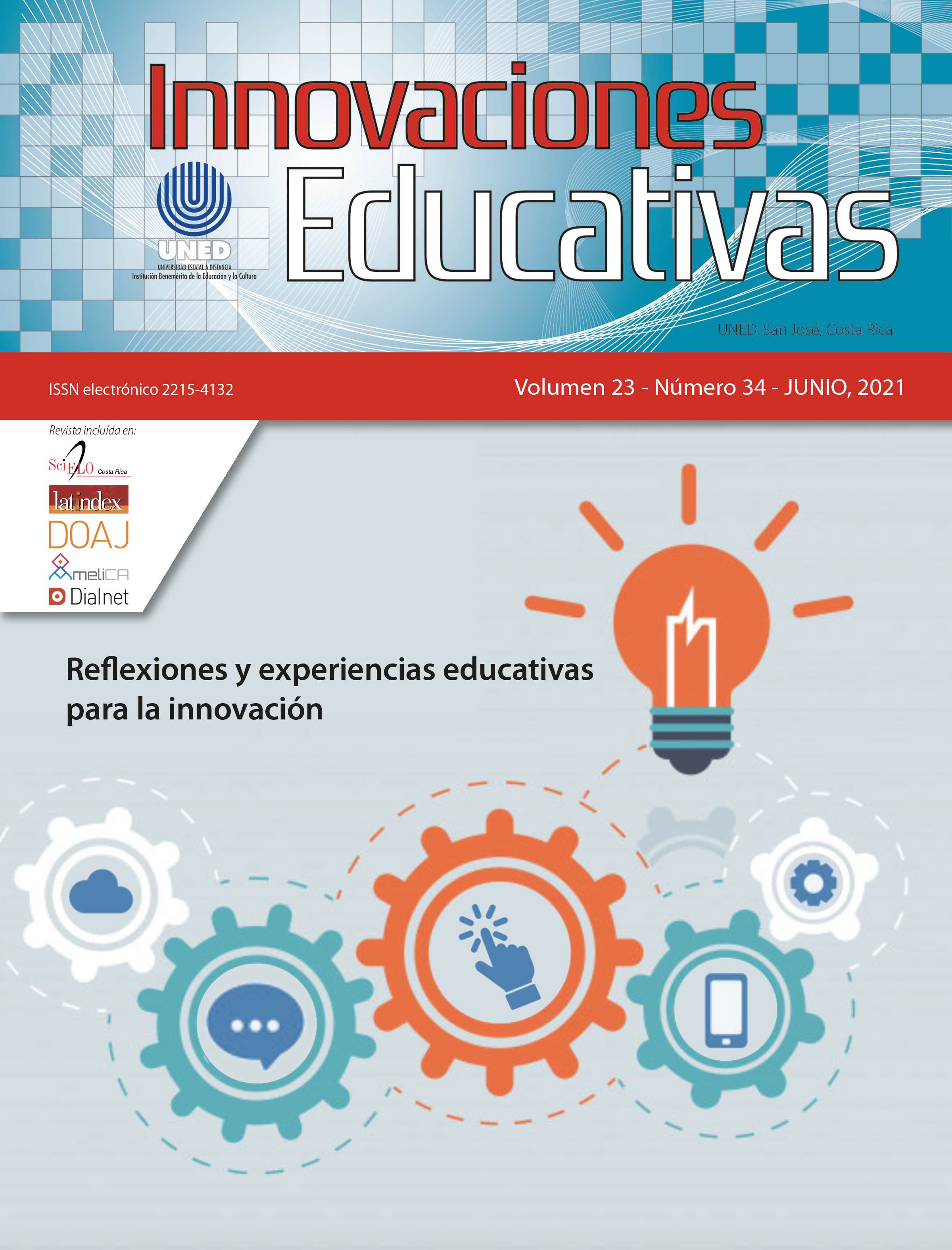Evaluation practices in flipped classroom and m-learning contexts
DOI:
https://doi.org/10.22458/ie.v23i34.3152Keywords:
Assessment, Flipped classroom, Teaching method, M-Learning, Higher educationAbstract
In recent years, pedagogical models of the highest level have shown a great expansion towards blended learning (Ibáñez, de Benito Crosetti, Garcías, and Cervera, 2018; Mariño, 2007; Morán, 2012; Vera, 2008). These models allow for incorporating both the face-to-face and virtual environments in such a way that it allows the optimization of the most compelling qualities of each of them. Among the different ways of implementing blended learning is the flipped classroom (Coufal, 2014; Schneider, Suhr, Rolon, & Almeida, 2013), which has been continuously acquiring more relevance. In these contexts, teachers face the transformation of all their practices; among them, evaluation is a relevant axis that has been little addressed. Based on this problem, the research presented in this work addressed the evaluation carried out in three school subjects. The approach, strategies, and instruments were examined that one may establish the particularities of evaluation in these contexts. Through a qualitative approach, information was collected through interviews, observations, and documentary analysis. Likewise, a constant comparative method was adopted, and the categories that allowed characterizing evaluation in flipped classroom contexts we reconstructed. The decisions and actions regarding evaluation demonstrated how the pedagogical proposal and the didactic possibilities of the activities define the evaluation’s characteristics more than it does the qualities of the technological tools.
References
de Camilloni, A., Davini, M. C., Edelstein, G., Litwin, E., Souto, M., & Barco, S. (1998). Corrientes didácticas contemporáneas. Paidós.
Frabboni, F. (1984). La scuola de base tempo lungo. Nápoles: Liguori.
Gardner, H. (2001). La inteligencia reformulada: las inteligencias múltiples en el siglo XXI Paidos
González-Pérez, L. I., Glasserman Morales, L. D., Ramírez-Montoya, M. S., & García-Peñalvo, F. J. (2017). Repositorios como soportes para diseminar experiencias de innovación educativa. Innovación Educativa. Investigación, formación, vinculación y visibilidad, 259-272.
Grund, F. B., & Gil, D. J. G. (2011). Mobile learning: Los dispositivos móviles como recurso educativo. Madrid
Hernández Sampieri, R., & Fernández Collado, C. (2014). Baptista Lucio Pilar. Metodología de la investigación. Sexta Edición, México.
Hernández Sampieri, R., & Fernández Collado, C. (2010). Baptista Lucio MdP. Metodología de la investigación, 6.
Ibáñez, J. S., de Benito Crosetti, B., Garcías, A. P., & Cervera, M. G. (2018). Blended learning, más allá de la clase presencial. Revista Iberoamericana de Educación a Distancia, 21(1), 195-213.
Lage, M. J., Platt, G. J., & Treglia, M. (2000). Inverting the classroom: A gateway to creating an inclusive learning environment. The Journal of Economic Education, 31(1), 30-43.
Litwin, E. (2008). El oficio de enseñar. Editorial Paidos.
Mariño, J. C. G. (2007). B-Learning utilizando software libre, una alternativa viable en educación superior. Ciencia UAT, 1(3), 60-66.
Méndez, J. M. Á. (1996). Yo también quiero ser eficaz. Cuadernos de pedagogía, (247), 78-82.
Morán, L. (2012). Blended-learning. Desafío y oportunidad para la educación actual. EDUTEC. Revista Electrónica de Tecnología Educativa, (39), a188-a188.
Morin, E. (2003). Educar en la era planetaria. Editorial Gedisa.
Perkins, D. (1999). The many faces of constructivism. Educational leadership, 57(3), 6-11.
Pozo, J. I., & Monereo, C. (2001). El aprendizaje estratégico. Docencia universitaria, 2(2), 105-109.
Pozo, J. I. (2009). Psicología del aprendizaje universitario. Ediciones Morata.
Rué, J. (2009). El aprendizaje autónomo en educación superior (Vol. 20). Narcea Ediciones.
Salomon, G., Perkins, D. N., & Globerson, T. (1992). Coparticipando en el conocimiento: la ampliación de la inteligencia humana con las tecnologías inteligentes. Comunicación, lenguaje y educación, 4(13), 6-22.
Santos Guerra, M. Á. (1993). La evaluación: un proceso de diálogo, comprensión y mejora. Revista Investigación en la Escuela, 20, 23-35.
Schneider, E. I., Suhr, I. R. F., Rolon, V. E., & Almeida, C. M. D. (2013). Sala de Aula Invertida em EAD: uma proposta de Blended Learning. Revista Intersaberes, 8(16), 68-81.
Stenhouse, L. (1984). Investigación y desarrollo del currículum. Ediciones Morata.
Talbert, R. (2012). Inverted classroom. Colleagues, 9(1), 7.
Valero, C. C., Redondo, M. R., & Palacín, A. S. (2012). Tendencias actuales en el uso de dispositivos móviles en educación. La educación digital magazine, 147, 1-21.
Vera, F. (2008). La modalidad blended-learning en la educación superior. Rancagua, Chile.

